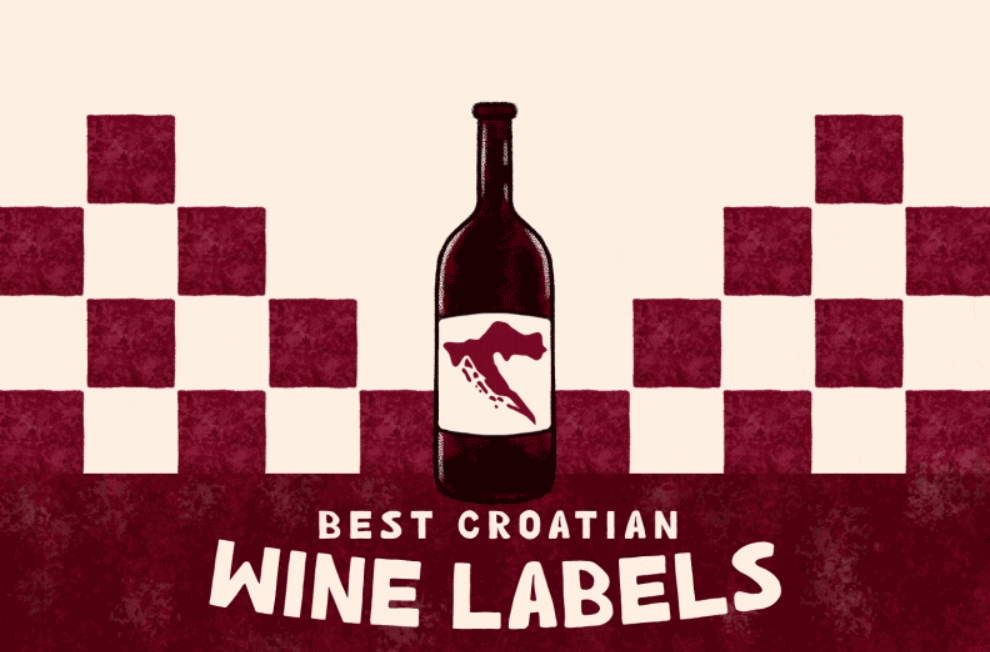January 29, 2024. – Exploring the world of Croatian wines goes beyond the bottle’s content; it delves into the realm of aesthetics, where labels play a pivotal role. Wine & more team spotlights the best-designed wine labels that not only catch the eye but also tell a story and enhance the overall experience of savoring fine Croatian wines.
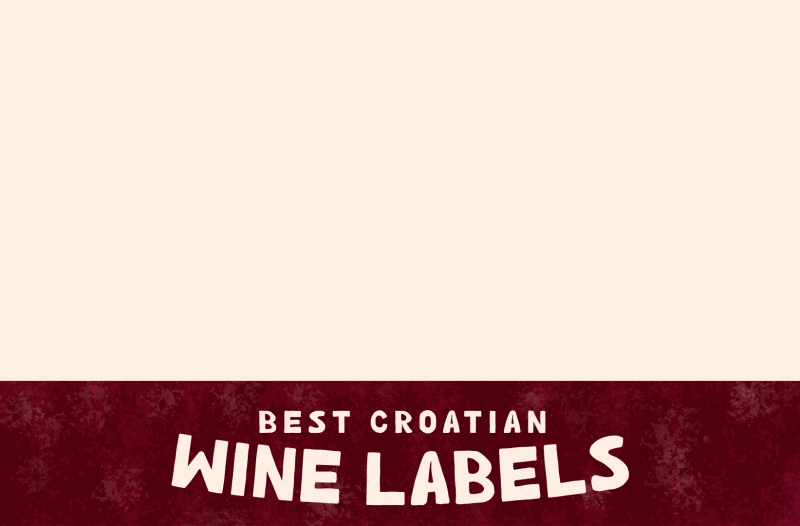
Understanding Croatian Wine Labels
In Croatia, wine labels are easy to understand if you know the requirements for labeling:
- Designation of origin (ZOI) – sometimes named as “vinogorje”: 1. Istočna kontinentalna Hrvatska 2. Hrvatsko Podunavlje 3. Slavonija 4. Zapadna kontinentalna Hrvatska 5. Moslavina 6. Prigorje-Bilogora 7. Plešivica 8. Pokuplje 9. Zagorje-Međimurje 10. Primorska Hrvatska 11. Hrvatska Istra 12. Hrvatsko primorje 13. Sjeverna Dalmacija 14. Dalmatinska zagora 15. Srednja i Južna Dalmacija 16. Dingač 17. Ponikve
- Winery name: Registered official name of the producer.
- Variety: If at least 85% of the wine is made from that variety.
- Name of the wine: This could be a fantasy name or any combination of symbols to distinguish a certain wine. Such could be a blend of varieties, but it could also be a varietal wine.
- Vintage: if at least 85% of the wine is from a single vintage.
- Alcohol content: In percentages.
- Net quantity: Usually in litres, 0.75 L, 1.5 L or other.
- Traditional marks: For example, Croatian wines used to be labeled as “stolno” (translates as “table quality” wine), “kvalitetno” (translates as “quality” wine), or “vrhunsko” (translates as “premium quality” wine), but these marks shouldn’t be considered as quality indicators anymore.
- Other requirements: LOT numbers, administrative markings.
Additionally, as of December 8th, 2023, new EU regulations mandate the declaration of ingredients, including allergens and nutrition information, on wine labels. Limited space on printed labels has led to the use of QR codes for accessing detailed information.
Elements of a Compelling Wine Label
A compelling wine label seamlessly combines creativity and functionality, balancing key visual elements such as visually captivating graphics, distinctive typography, harmonious color schemes, storytelling elements, symmetry, texture, and finishes. Consistency through visual identity, sustainability, innovative label shapes, and formats contribute to an exceptional design that evokes emotions and enhances the overall wine-drinking experience. Here are some of the intricate key visual elements:
- Visually Captivating Graphics: Illustrations, photographs, or abstract designs.
- Distinctive Typography: Fonts and typography contribute to the overall aesthetic and readability, but also to the general appearance.
- Color Schemes: A palette of colors that aligns with the wine’s characteristics.
- Storytelling Elements: Through subtle imagery, a brief narrative, or symbolic elements, communicate the heritage, origin, and unique qualities of the wine.
- Symmetry and Balance: Composition contributes to the label’s coherence.
- Texture and Finishes: Exceptional labels often incorporate textures or finishes such as embossing, foil stamping, or specialty paper to add depth and a luxurious feel.
- Consistency through Visual Identity: A compelling wine label design aligns with the overall brand image and ensures consistency across product lines.
- Sustainability and Eco-Friendly Design: Using recycled materials, eco-friendly inks, or indicating the winery’s commitment to sustainable practices.
- Innovative Label Shapes and Formats: Unusual label shapes or unique die-cut designs can make a bottle stand out.
Ultimately, what makes a wine label design truly exceptional is its ability to evoke emotions, stimulate curiosity, and enhance the overall experience of enjoying a fine bottle of Croatian wine.
Best Croatian Wine Labels
Highlighting some of the best-designed and most awarded Croatian wine labels, we showcase the following:
- Stina Winery
- Enosophia Winery
- Vislander Winery
- Piquentum Winery
- Saints Hills Winery
- Šuran Winery
- Korlat Line
Highlighting Top Croatian Wine Labels
In this section, we spotlight some of the best Croatian wine labels. From the distinguished Piquentum to the innovative Saints Hills and the sleek Stina, each label has a unique story to tell. These labels have received national and international acclaim, with each embodying a unique story and visual appeal that sets them apart.
Stina Winery Labels
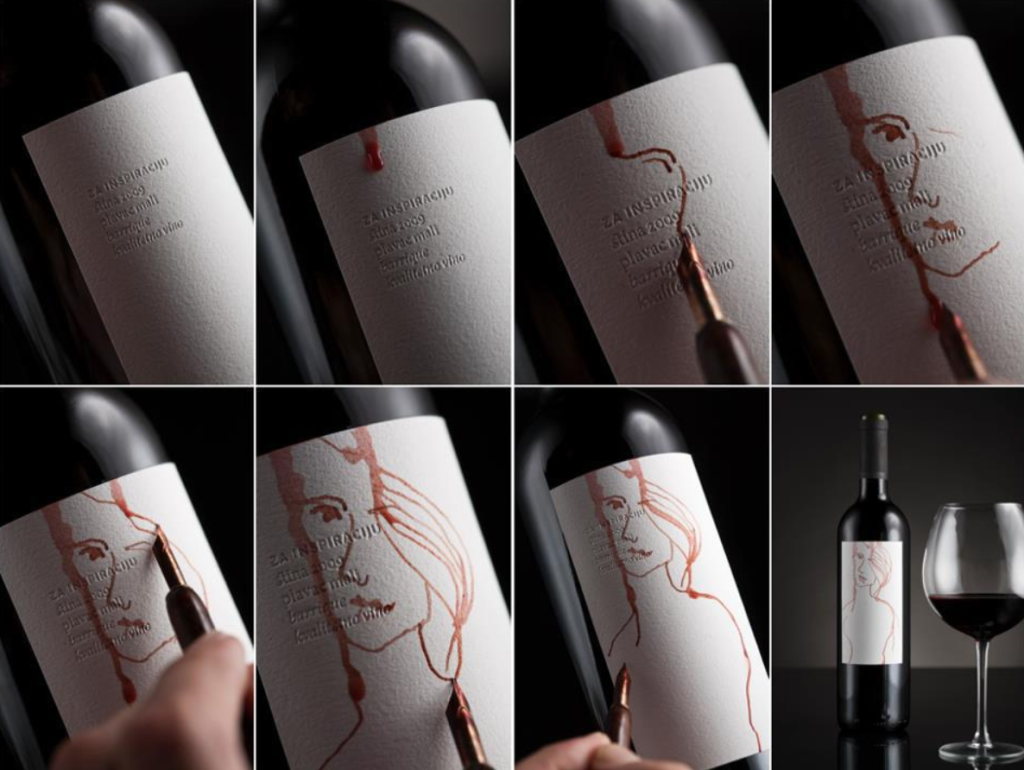
Stina, a label adorned with numerous awards, mirrors the renowned Brač stone in both color and texture. This exquisite wine is crafted on the island of Brač, celebrated for its iconic white stone that has served as inspiration for artists through the ages. The labels, resembling a blank white canvas, beckon all to unleash their creative expressions.
The winery’s inaugural single-vineyard wine, Stipančić, takes its name from the challenging vineyard it originates from. Situated on a steep, difficult-to-reach slope, the Stipančić vineyard is characterized by its stony terrain. The four-layer label artfully captures the essence of this incline, presenting a creative challenge to all – to create in harmony with the slopes, mirroring the dedication of the Stina winemakers in the Stina Plavac mali Stipančić vineyard.
Enosophia Interactive AR label
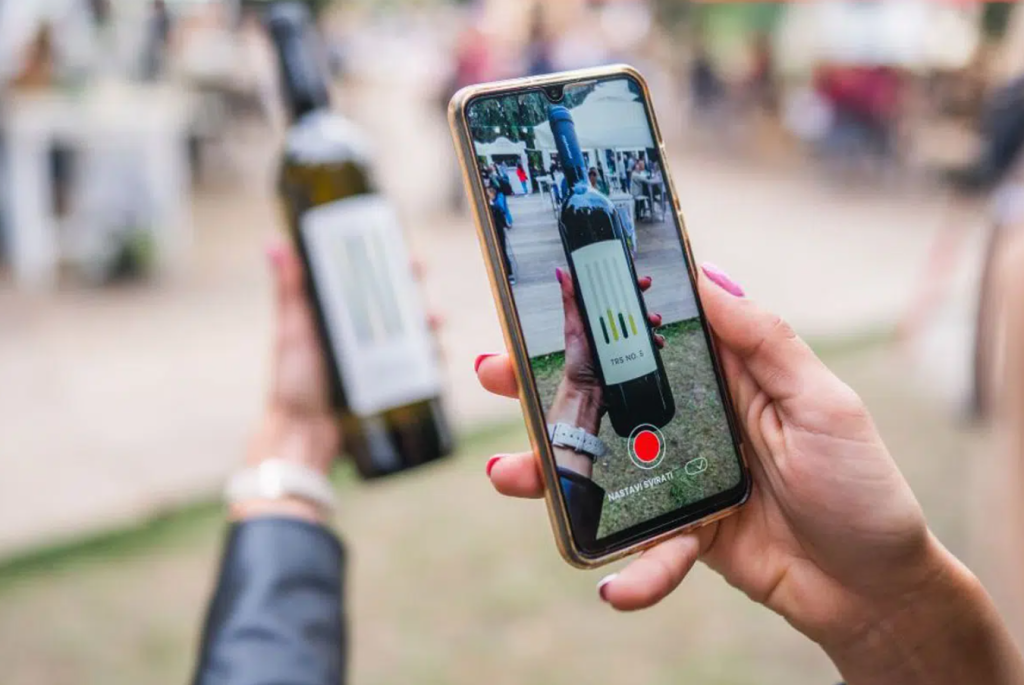
Highlighting interactivity as a key aspect of label design, it’s worth noting the introduction of Enosophia – the first Croatian winery featuring an interactive Augmented Reality (AR) label. Launched in 2021 by Enosophia, Graševina TRS No. 5 and the rose Matarouge utilize AR technology to offer app users engaging and informative content about the wines.
Vislander Visual Identity
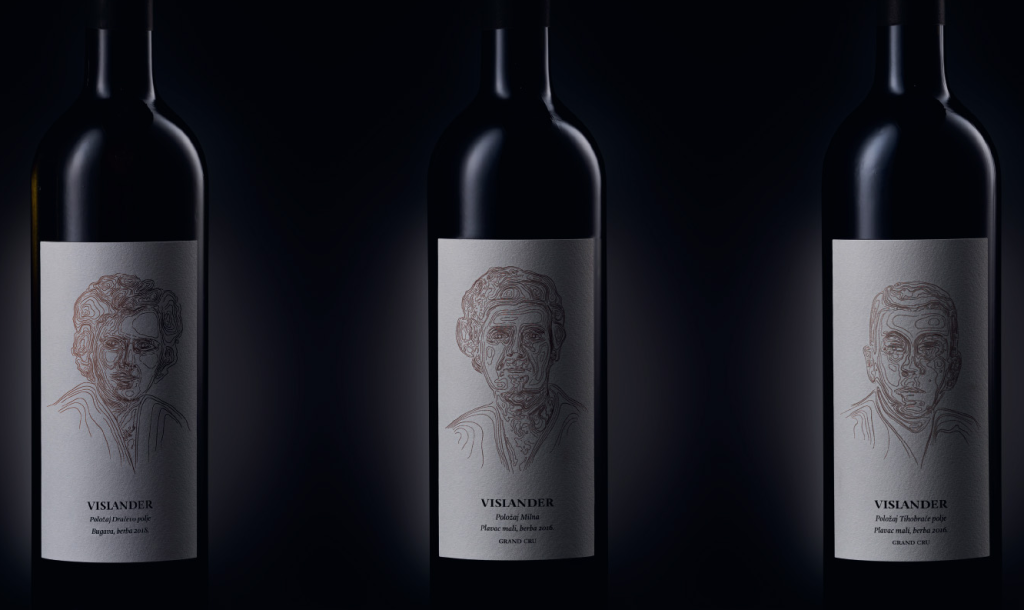
In the midst of World War II, the residents of Vis Island struck a distinctive deal with British soldiers stationed on their island. Faced with food shortages, the islanders exchanged their Plavac wine for the soldiers’ Meals Ready-to-Eat (MREs), and the success of this pact was attributed to the ideal sandfield terrain and dedicated labor.
This historical backdrop, intricately woven with a family’s journey, laid the foundation for Vislander. The label design, featuring the island’s topography and vintage family photographs, pays homage to the winemaking legacy embraced by this vineyard. Reflecting the uniqueness of each vineyard and its location, Vislander embarks on a distinctive winemaking journey.
Upholding a rich tradition in winemaking, the Vislander Winery is dedicated to sustainable practices, eschewing synthetic pesticides and chemical fertilizers to prioritize the well-being of soil, grapevines, and fauna. With grapes meticulously hand-harvested and processed to the highest standards, Vislander products honor the island’s history and terroir with equal reverence, setting them apart.
Specializing in wines crafted from the indigenous Plavac mali and Vugava grape varieties of the Island of Vis, the Vislander winery offers a product range that includes premium wines, grappas, and gin.
While featuring faces on wine labels is not a novel concept, Vislander uniquely intertwines each face with a topography map. Recognizing the significance of topography in winemaking and island life, this innovative approach adds a distinctive touch to the portrayal of Vislander’s connection to the island of Vis.
Piquentum Wine Labels
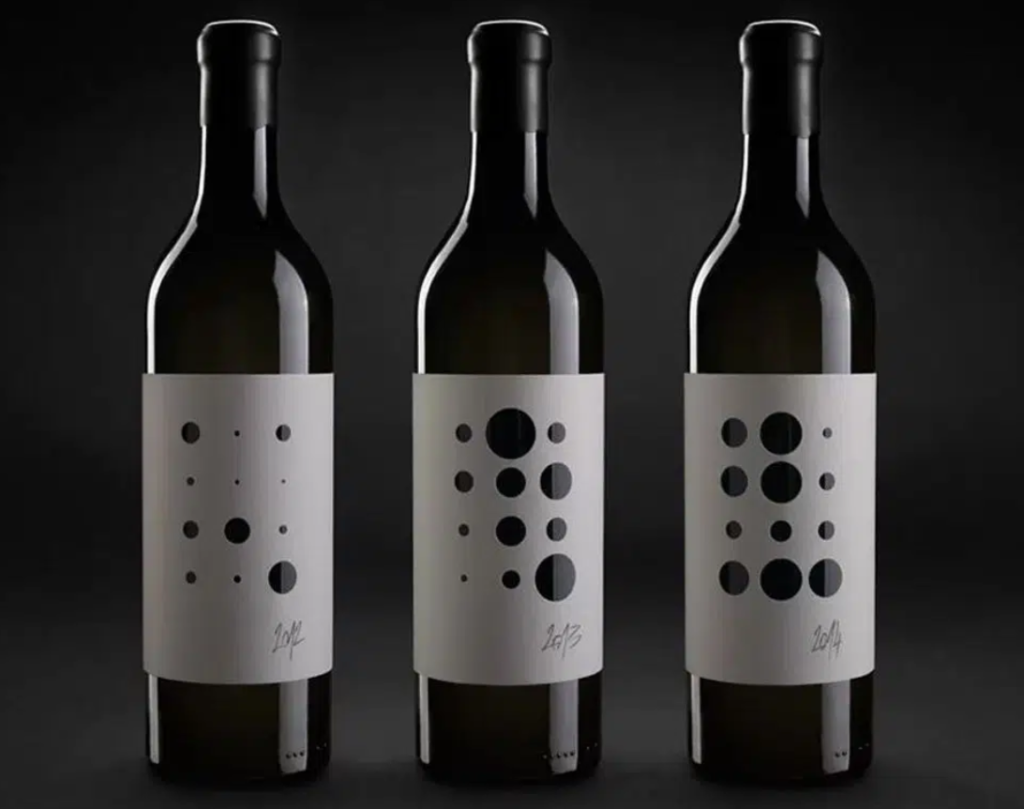
Piquentum Winery’s labels focus on raising awareness about the harvest year, showcasing weather conditions graphically. As a result, every vintage of Piquentum wine depends greatly on the weather conditions shown on the label. Data on weather conditions in vineyard territory was collected in cooperation with the Meteorological Institute.
The amount of precipitation was used as a variable that can best show nature’s diversity graphically each year. The indicated data start with October of the previous year and end with the month of harvest – September of the current year. The label has won over ten awards for its innovative approach and significant media coverage.
Šuran Winery
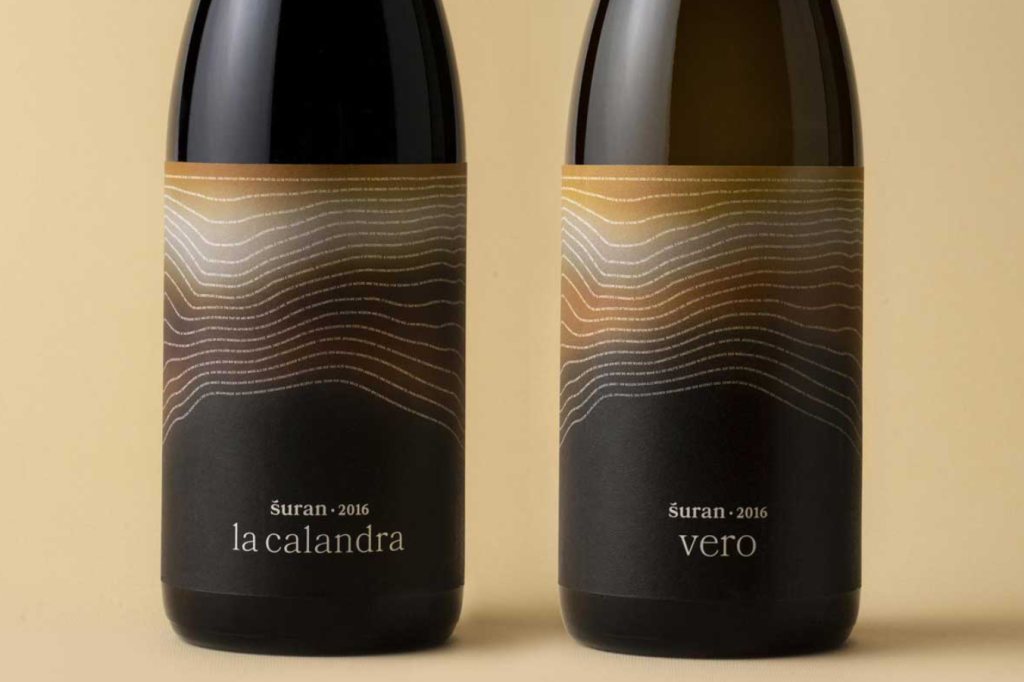
The innovative concept behind the packaging of Šuran biodynamic wines is rooted in a crucial aspect of its production. Specifically, the grapes undergo treatment solely with traditional organic substances, enhancing the microbiological activity of the soil. This activity manifests through the layers of the soil, with microorganisms depicted in minimally sized letters forming a quote from the Italian scientist and activist Carlo Petrini.
The text advocating for environmental awareness remains invisible to the naked eye; however, a magnifying glass is seamlessly integrated into the lid, allowing users to read it. In 2022, this label received both the Dieline Award and the Art Directors Club New York Merit Honor.
Saints Hills Winery
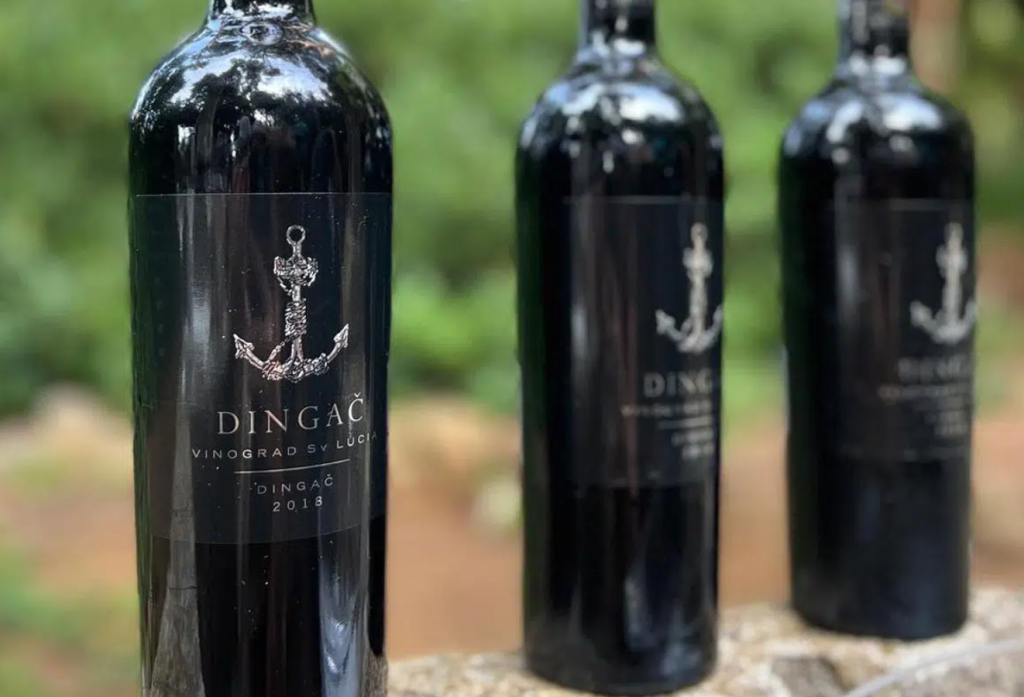
Originating in London, the Saints Hills labels boast an original design that establishes a direct connection between the product and its place of origin. Rather than being directly printed on the bottle, the design utilizes transparency and the overall appearance of the bottle to create a cohesive whole. With a centered image and a symmetrical composition, these labels exude a modern aesthetic that sets them apart from one another while clearly belonging to the same identity.
According to the designer, “On a global scale, Dingač represents the original wine of the autochthonous Dalmatian variety, Plavac Mali. Consequently, following an analysis of international markets, we crafted a design that aligns with this trend wherever Saints Hills wines are served worldwide.”
Korlat Line Label
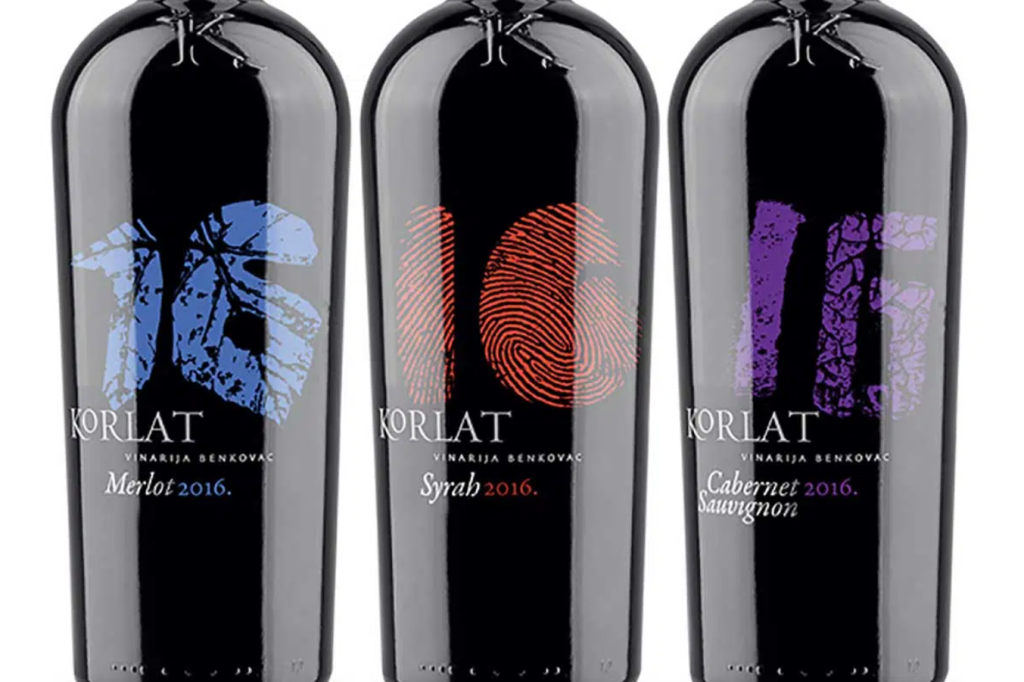
Korlat, a Croatian wine produced by Badel 1862 distinguished by its prestigious Red Dot Award for design, stands out with its modern elements and innovative approach. The label, a key feature, is directly printed on the bottle using special techniques, perfectly complementing the strength and character of the wines.
Notably, the vintage holds a prominent place, with each year’s symbol uniquely crafted. Despite the changing designs, the label has maintained consistent recognition over the years. Additionally, each wine type is easily distinguishable by color—Syrah in red, Merlot in blue, and Cabernet Sauvignon in purple. While not the first of its kind, the label’s exceptional visibility, recognition, and distinctiveness contribute to its uniqueness in the wine industry.
Conclusion
A captivating wine label design goes beyond aesthetics, transforming the label into a work of art that enhances the overall enjoyment of Croatian wines. As consumers seek engagement, storytelling labels and unique designs become increasingly popular.
While the visual appeal is crucial, the authenticity of the wine itself remains paramount. In the dance of design and content, being real emerges as the winner, ensuring consumers not only appreciate the visual aesthetics but also savor the genuine goodness in every bottle.
NOTE: The article was originally written by wineandmore.com

